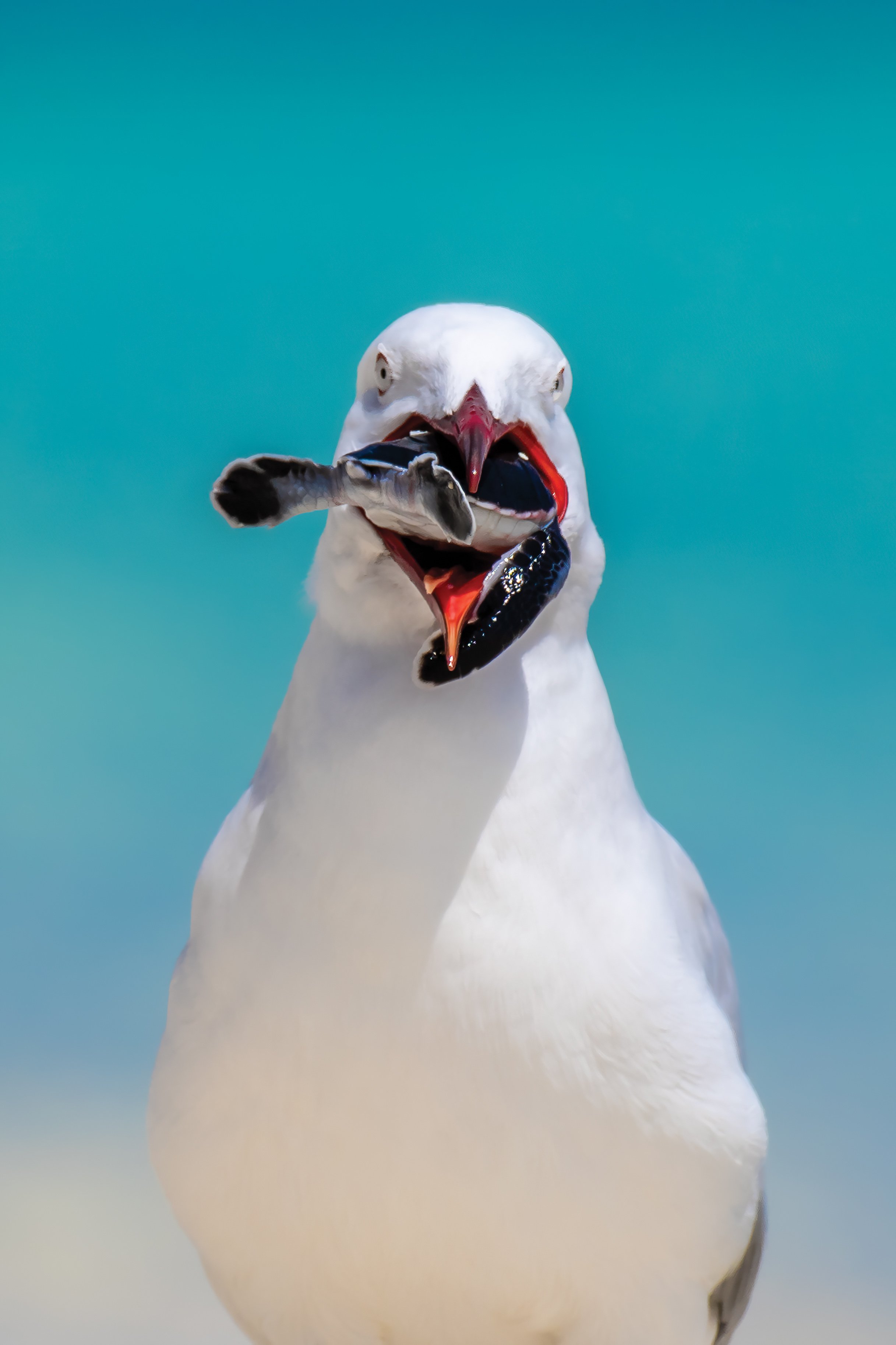What are the Natural Predators of Sea Turtles?
By MICHAEL HEITHAUS
When we think about threats to sea turtles, we often think only about human-related pressures. But sea turtles face a multitude of risks from natural predators throughout their life cycles.
Predation pressure on sea turtles starts before they hatch, when nests may be raided by mammals such as raccoons or foxes; several species of crabs; or countless forms of microbes, insects, mites, and more.
Sea turtles have many natural predators throughout their life cycles, and are especially vulnerable as hatchlings. © Jake Wilton
Hatchling turtles are at even greater risk from mammals, birds, and crabs as they cross the beach to the sea. Once they reach the water’s edge, things don’t get any easier. During their frenzied swim to reach deeper water, hatchlings are eaten by large bony fish, sharks, and sea birds. And when they reach deeper waters or the safety of mats of floating algae, the risks decline but don’t disappear. In those habitats, too, the turtles are consumed by large bony fish and sharks, though we still cannot quantify the magnitude of this predation, nor do we know what other risks turtles may face during the posthatchling portion of their lives.
Once they have survived hatchlinghood and have large bodies and hard shells, adult sea turtles might be more immune to predators. But in Central and South America, American crocodiles and jaguars are a threat to nesting females, and in the Indo-Pacific, saltwater crocodiles prey on adult turtles both on nesting beaches and in inshore waters. At sea, large sharks are the primary predators of adult sea turtles, although killer whales may occasionally eat sea turtles. Although white sharks and bull sharks have been recorded eating sea turtles—including accounts of white sharks eating adult leatherbacks—those two species rarely dine on sea turtles. But tiger sharks frequently prey on large juvenile and adult sea turtles. In fact, tiger sharks may have evolved specifically to feed on sea turtles. Tigers grow to over 4.5 meters (about 15 feet) and have broad heads that can accommodate large prey and curved, serrated teeth that cut in both directions when the sharks shake their heads, an adaptation that enables them to cut through a turtle’s thick shell. Indeed, sea turtles worldwide are at risk from tiger shark predations in shallow seagrass ecosystems, coral reefs, and the open sea. In response, turtles have likely adopted behaviors, like choosing lower risk habitats (for instance, green turtles basking on shore), to reduce the hazard posed by tiger sharks.
Tiger sharks certainly play an important role in regulating turtle populations. Overfishing of sharks in the Pacific, for instance, along with diminished human take of turtles over decades, is likely one of the factors behind the rise in Hawaiian green turtle numbers in recent decades. And in the Atlantic, the disappearance of seagrasses off Bermuda may be due to reductions in tiger sharks and the consequent increase in turtles, which are major seagrass grazers. Maintaining natural predator-to-prey interactions in the oceans by conserving tiger sharks and turtles and all such symbiotic relationships is important to ensuring the overall health of ocean ecosystems.
This article originally appeared in SWOT Report, vol. 18 (2023). Click here to download the complete article as a PDF.

